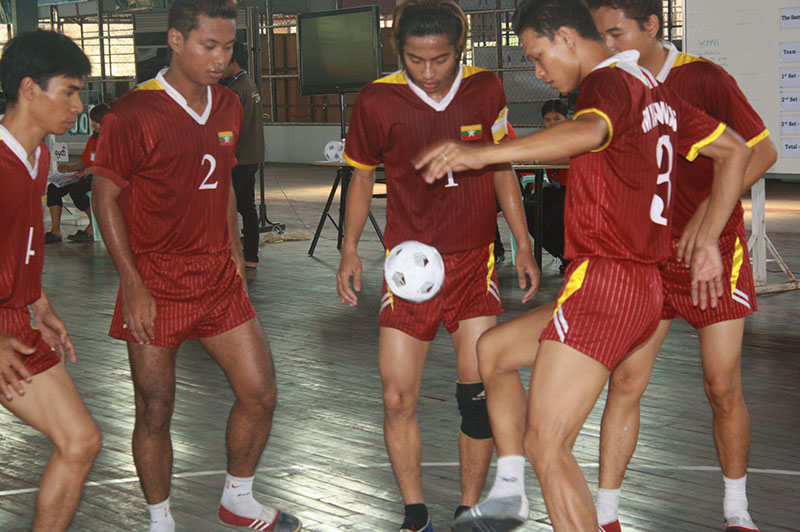The first gold medals of the 27th SEA Games will be awarded on Wednesday evening and Burma expects to capture them, giving the country the kick-start it needs to top the league of Southeast Asian nations before the full programme of events even begins.
Despite the opposition of several other teams, notably the Philippines and Indonesia, the traditional Burmese sport of chinlone was selected by the country’s sports authorities to be included in this year’s events; in fact, as Burma’s national sport and past-time it will lead the SEA Games as the first competitive fixture beginning at 9am on 4 December in the 5,000-capacity Wunna Theikdi stadium in Naypyidaw.
Burmese men’s and women’s teams will compete against Thailand, Malaysia, Cambodia and Laos, and Burma’s coach Khin Maung Win is confident.
“Since 16 February, 2013, Myanmar chinlone players have been undergoing intensive training at the Gold Camp in Naypyidaw,” he was quoted saying by state-run The New Light of Myanmar on Tuesday. “They are ready to compete in the games. I am sure that they will clinch victory.”
[related]
Unlike the better known and competitive sepak takraw – which is also played with a small rattan ball, but is akin to a game of volleyball without the use of hands – chinlone is a performance art where one team of six players juggle the ball together, unimpeded by rivals.
Each member of the team takes turns at moving into the middle of a circle and producing a short solo performance of “keepy-uppy” where he or she shows off their skills before passing the ball to a teammate. A referee stands close by, checking that the six designated parts of the body are used to juggle the ball – the shoulder, the knee and four parts of the foot (toes, heel, instep and outside). Players lose points if they use other parts of the body to keep the ball alive or allow the ball to touch the ground.
But while most club players have little difficulty in performing these moves, it is the aesthetic part of their display that invariably wins a tournament. At the end of the performance, which is often played to the background of traditional music, the team is awarded points by judges based on individualistic skills, artistic performance and the level of difficulty, much like ice-skating or gymnastics in the Olympics.
It is this display of unique skill and cheeky maneuvers that the crowd loves to see, and which should win the hearts of the judges and the fans.
To further whet the appetite for Burma’s national sport, two 11-year-old twins from Hpa-an in Karen state will perform in front of 30,000 spectators in a massive chinlone display which is to be one of the highlights of the opening ceremony on 11 December.
Thought to be 1,500 years old and once reserved as a performance art for the exclusive enjoyment of royalty, chinlone was exported from Burma centuries ago to its neighbours who have taken it up and added their own styles to the sport. The Thais call the game takraw, while the Malays, Singaporeans and Indonesians play sepak raga. It is called sipa in the Philippines, kator in Laos, and da cauin in Vietnam.
After all the hype and protest over its inclusion, the aesthetic sport of chinlone finally has a chance to bathe in the limelight of an international arena. Millions of eyes will be watching on Wednesday, and Burmese fingers will be crossed that not only will its teams win gold but that the sport is viewed enthusiastically by all.
Schedule for chinlone at SEA Games (4 December): http://www.27seagames2013.com/sports/type/chinlone
See the beautiful game of chinlone in action: http://www.youtube.com/watch?v=4E77M_DEVAU



